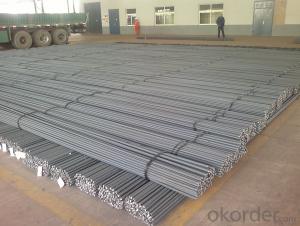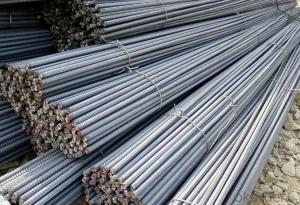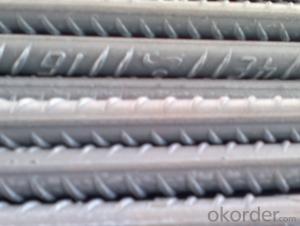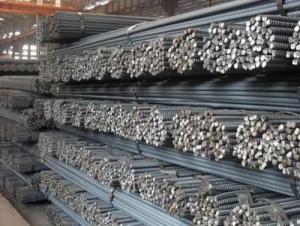Steel Rebar/Deformed Steel Bar / Iron Rods for Construction/Concrete
- Loading Port:
- Tianjin
- Payment Terms:
- TT or LC
- Min Order Qty:
- 100 m.t.
- Supply Capability:
- 30000 m.t./month
OKorder Service Pledge
OKorder Financial Service
You Might Also Like
OKorder is offering Steel Rebar/Deformed Steel Bar / Iron Rods for Construction/Concrete at great prices with worldwide shipping. Our supplier is a world-class manufacturer of steel, with our products utilized the world over. OKorder annually supplies products to African, South American and Asian markets. We provide quotations within 24 hours of receiving an inquiry and guarantee competitive prices.
Product Applications:
Steel Rebar/Deformed Steel Bar / Iron Rods for Construction/Concrete are ideal for structural applications and are widely usedthe construction of buildings and bridges, and the manufacturing, petrochemical, and transportation industries
Product Advantages:
OKorder's Steel Rebar/Deformed Steel Bar / Iron Rods for Construction/Concrete are durable, strong, and wide variety of sizes.
Main Product Features:
· Premium quality
· Prompt delivery & seaworthy packing (30 days after receiving deposit)
· Can be recycled and reused
· Mill test certification
· Professional Service
· Competitive pricing
Product Specifications:
Manufacture: Hot rolled
Grade:HRB400
Certificates: ISO, SGS, BV, CIQ
Packed: prproduct packed in bundles
Deformed Steel Bar | ||
Diameter (MM) | Cross Sectional Area (MM2) | Theorectical Weight (KG/M) |
6 | 28.27 | 0.222 |
8 | 50.27 | 0.395 |
10 | 78.54 | 0.617 |
12 | 113.1 | 0.888 |
14 | 153.9 | 1.21 |
16 | 201.1 | 1.58 |
18 | 254.5 | 2 |
20 | 314.2 | 2.47 |
22 | 380.1 | 2.98 |
25 | 490.9 | 3.85 |
28 | 615.8 | 4.83 |
32 | 804.2 | 6.31 |
36 | 1018 | 7.99 |
40 | 1257 | 9.87 |
Grade | Technical data of the original chemical composition (%) | |||||||
C | Mn | Si | S | P | V | |||
HRB400 | ≤0.25 | ≤1.60 | ≤0.80 | ≤0.045 | ≤0.045 | 0.04-0.12 | ||
Physics capability | ||||||||
Yield Strength(N/cm2) | Tensile Strength(N/cm2) | Elongation (%) | ||||||
≥400 | ≥570 | ≥14 | ||||||
FAQ:
Q1: Why buy Materials & Equipment from OKorder.com?
A1: All products offered byOKorder.com are carefully selected from China's most reliable manufacturing enterprises. Through its ISO certifications, OKorder.com adheres to the highest standards and a commitment to supply chain safety and customer satisfaction.
Q2: How do we guarantee the quality of our products?
A2: We have established an advanced quality management system which conducts strict quality tests at every step, from raw materials to the final product. At the same time, we provide extensive follow-up service assurances as required.
Q3: How soon can we receive the product after purchase?
A3: Within three days of placing an order, we will arrange production. The normal sizes with the normal grade can be produced within one month. The specific shipping date is dependent upon international and government factors, the delivery to international main port about 45-60days.
Q4: How many tons of steel products could be loaded in containers?
A4: Usually the steel products are delivered by bulk vessel because of the large quantity and the freight. However, there are no bulk vessel enter some seaports so that we have to deliver the cargo by containers. The 6m steel product can be loaded in 20FT container, but the quantity is changed according to the size, usually from 18tons to 25tons.
Images:
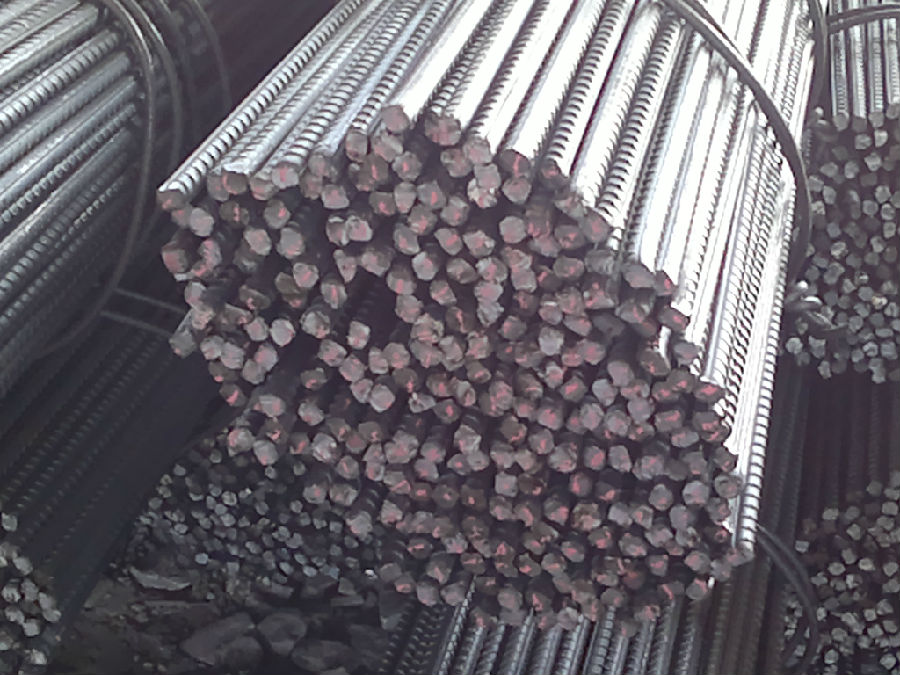
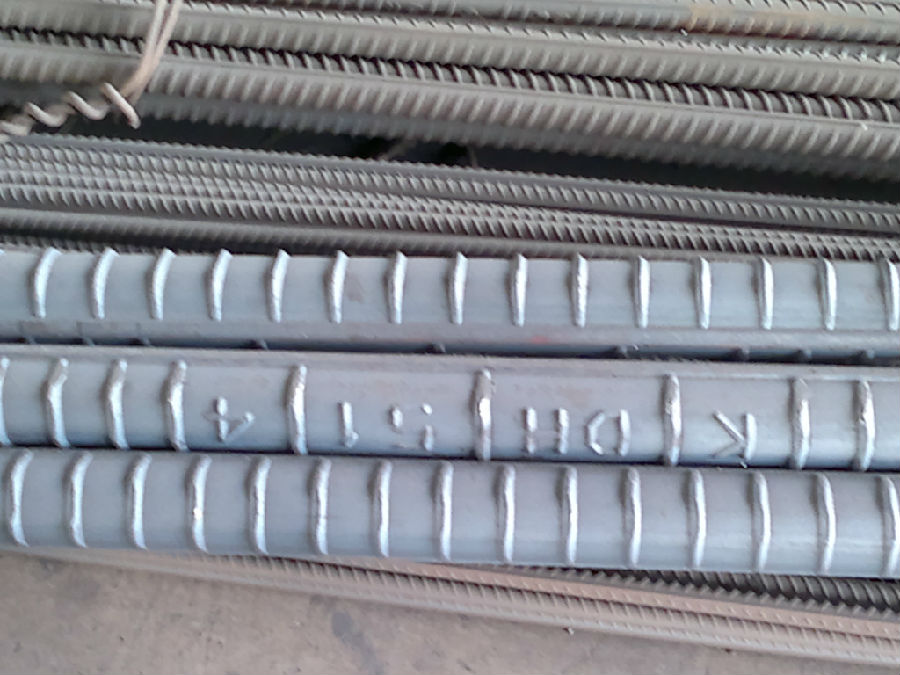
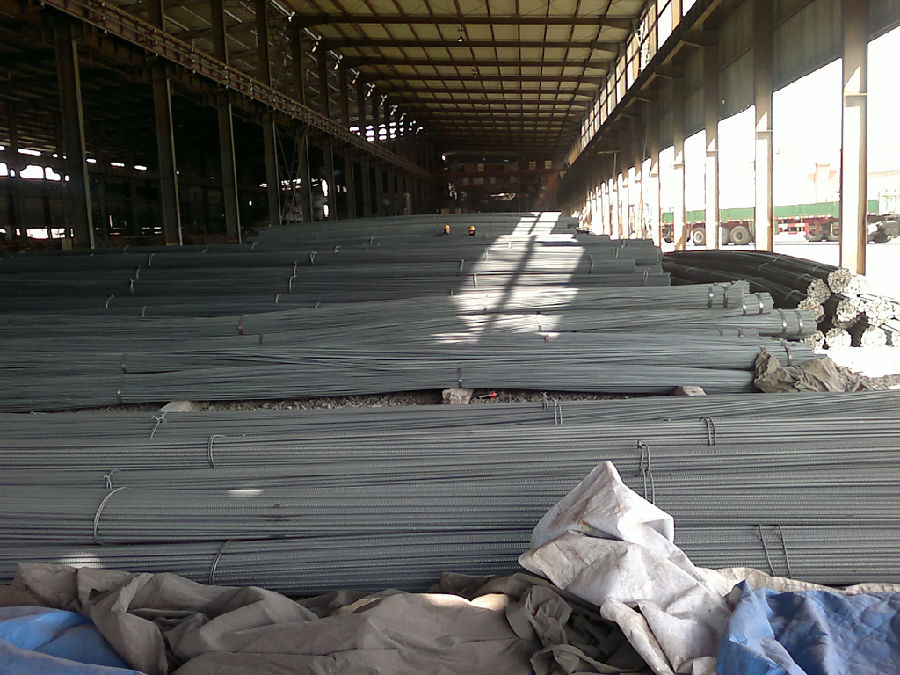
- Q:How are steel rebars used in the construction of power transmission towers?
- Steel rebars are commonly used in the construction of power transmission towers to reinforce the concrete foundations and provide structural stability. They are placed within the concrete to enhance its tensile strength and resistance to bending, ensuring the tower's ability to withstand the weight of the structure and the forces exerted by wind and load.
- Q:Can steel rebars be used in structures with high resistance to earthquakes?
- Yes, steel rebars can be used in structures with high resistance to earthquakes. Steel rebars are commonly used in seismic-resistant structures due to their high tensile strength and ductility. They are able to absorb and dissipate the energy generated during an earthquake, providing reinforcement and stability to the structure. Additionally, modern construction techniques and design codes ensure that steel rebars are properly integrated into earthquake-resistant structures to enhance their overall resilience.
- Q:What are the different methods for attaching steel rebars to existing structures?
- There are several methods for attaching steel rebars to existing structures, depending on the specific requirements and conditions of the project. Some common methods include: 1. Welding: This method involves using welding techniques to attach the rebars to the existing structure. It provides a strong and durable connection, but it requires skilled labor and may not be suitable for all situations. 2. Epoxy bonding: Epoxy adhesives can be used to bond rebars to existing structures. This method is easy to apply and provides a reliable connection, especially when the rebars are embedded in concrete. However, it is important to ensure proper surface preparation and follow manufacturer's instructions for best results. 3. Mechanical anchoring: Mechanical anchors, such as anchor bolts or expansion anchors, can be used to attach rebars to existing structures. This method involves drilling holes into the structure and inserting the anchor, which provides a secure connection. It is important to select the appropriate anchor type and size based on the load requirements and structural conditions. 4. Clamping or fastening: In some cases, rebars can be attached to existing structures using clamps or fasteners. This method is relatively quick and easy to install, but it may not provide as strong of a connection as welding or epoxy bonding. 5. Overlapping: When reinforcing existing concrete structures, rebars can be overlapped with the existing reinforcement and tied together using wire or other methods. This method is commonly used in construction to ensure continuity of reinforcement and increase the load-carrying capacity. It is important to consult with structural engineers or professionals with expertise in rebar installation to determine the most suitable method for attaching steel rebars to existing structures. They will consider factors such as structural integrity, load requirements, and local building codes to ensure a safe and effective connection.
- Q:What are the guidelines for inspecting and testing steel rebars on-site?
- The guidelines for inspecting and testing steel rebars on-site typically include visually examining the rebars for any visible defects such as rust, cracks, or bends. Additionally, non-destructive testing methods like ultrasonic testing or magnetic particle inspection may be employed to detect any internal flaws or inconsistencies in the rebars. It is also crucial to ensure that the rebars meet the specified dimensions, lengths, and quality standards as per the project requirements. Regular sampling and testing of rebars are essential to maintain the structural integrity and safety of the construction project.
- Q:What does it mean to have 22 4GJ on the threaded steel?
- The brand of steel is expressed in terms of Arabia numerals or Arabia numerals plus English letters. HRB335, HRB400 and HRB500 are represented by 3, 4 and 5, respectively. HRBF335, HRBF400 and HRBF500 are represented by C3, C4 and C5 respectively. The name of the factory is expressed in Chinese phonetic prefix. Nominal diameter mm Arabia digital representation.
- Q:How do steel rebars affect the overall vibration resistance of a structure?
- The overall vibration resistance of a structure can be significantly enhanced by the use of steel rebars. These reinforcement bars, also known as rebars, are typically made of high-strength steel and are commonly utilized in reinforced concrete structures. Rebars play a crucial role in providing tensile strength to the concrete, which is inherently weak in tension. By embedding the rebars within the concrete, they effectively counteract the potential tensile forces resulting from applied loads or vibrations. Steel rebars assist in distributing stress and strain throughout the structure, thereby preventing localized failure points and increasing the overall structural integrity. Furthermore, rebars act as a damping mechanism in the case of vibrations, absorbing and dissipating vibrational energy. This damping effect reduces both the amplitude and frequency of vibrations, thereby enhancing the structure's resistance to damage caused by vibrations. Additionally, the presence of rebars enhances the dynamic properties of the structure, including its natural frequency and mode shapes. This is particularly crucial in structures such as bridges, tall buildings, or industrial facilities, where external factors like wind, seismic events, or machinery operations can induce vibrations. To summarize, steel rebars enhance the overall vibration resistance of a structure by providing additional strength, distributing stress, and acting as a damping mechanism. Their presence improves structural integrity, reduces the risk of failure, and ensures the safety and longevity of the construction.
- Q:How do steel rebars enhance the bond between concrete and reinforcement?
- The bond between concrete and reinforcement is improved by steel rebars through various mechanisms. Firstly, the inclusion of rebars in concrete enhances the mechanical interlock between the two materials. As concrete surrounds the rebars, it fills the spaces between the steel bars, resulting in a strong bond once it solidifies. This mechanical interlock effectively prevents the separation of concrete and reinforcement, particularly when subjected to tensile loads. Secondly, steel rebars augment the bond by offering additional surface area for adhesion. The rough texture of the rebars allows the concrete to firmly grip the steel surface, leading to a stronger bond. This adhesion is further enhanced by the formation of corrosion products on the rebars over time, creating an even rougher surface and increasing the bond strength between the concrete and reinforcement. Thirdly, rebars serve as load transfer devices in concrete structures. When external forces act on the structure, the rebars distribute and transfer these forces to the surrounding concrete. This load transfer mechanism significantly improves the overall structural integrity and performance of the concrete element. Furthermore, steel rebars also reinforce the bond between concrete and reinforcement by their ability to resist deformation. Under tensile loads, the rebars elongate and absorb the stress, preventing the concrete from developing cracks. This prevents the formation of cracks that could compromise the bond between the two materials. To summarize, steel rebars enhance the bond between concrete and reinforcement by providing mechanical interlock, increased surface area for adhesion, load transfer capabilities, and resistance to deformation. Together, these factors contribute to the overall strength, durability, and performance of reinforced concrete structures.
- Q:How do steel rebars improve the structural integrity of concrete?
- Steel rebars improve the structural integrity of concrete in several ways. First and foremost, they enhance the tensile strength of concrete, which is otherwise weak in tension. Concrete has excellent compressive strength but lacks the ability to withstand pulling or stretching forces. By inserting steel rebars into the concrete, the tensile strength of the entire structure is significantly increased. The steel rebars act as reinforcement by distributing the stress and load across a wider area, preventing cracks and fractures from propagating through the concrete. They provide a strong bond between the concrete and the reinforcement, allowing the structure to bear heavy loads and resist bending, shearing, and other forces that can compromise its stability. Additionally, steel rebars help to control and mitigate the effects of shrinkage and thermal expansion and contraction that occur in concrete. These phenomena can often lead to cracking and structural damage. The steel rebars help to restrain the movement of the concrete, reducing the risk of cracks forming and ensuring the overall integrity of the structure. Furthermore, steel rebars increase the durability and longevity of concrete structures. They have high resistance to corrosion, which is especially important in environments with high moisture, chemicals, or saltwater exposure. The presence of steel rebars protects the concrete from deterioration and extends the lifespan of the structure. In summary, steel rebars play a crucial role in improving the structural integrity of concrete by enhancing its tensile strength, distributing stress and loads, preventing cracks, controlling shrinkage, resisting bending and shearing forces, and increasing durability. They provide a reliable and effective reinforcement system that ensures the stability and longevity of concrete structures.
- Q:What is the average tensile strength of steel rebars?
- Steel rebars typically have an average tensile strength ranging between 400 and 600 megapascals (MPa). It should be noted that the grade and type of steel used in the manufacturing process can cause variations in the specific tensile strength. Tensile strengths above 600 MPa can be achieved with higher grades of steel rebars. Moreover, the tensile strength of the rebars can also be influenced by factors like their diameter and surface condition.
- Q:Are steel rebars susceptible to rust?
- Yes, steel rebars are susceptible to rust. Rebars are typically made of carbon steel, which contains iron. When exposed to moisture and oxygen, iron reacts to form iron oxide, commonly known as rust. This process is accelerated in the presence of salt or other corrosive substances. Rust formation weakens the rebars and can eventually lead to structural damage if left untreated. Therefore, it is crucial to protect steel rebars by applying an appropriate coating or using other corrosion prevention methods to ensure the longevity and structural integrity of reinforced concrete structures.
1. Manufacturer Overview |
|
|---|---|
| Location | |
| Year Established | |
| Annual Output Value | |
| Main Markets | |
| Company Certifications | |
2. Manufacturer Certificates |
|
|---|---|
| a) Certification Name | |
| Range | |
| Reference | |
| Validity Period | |
3. Manufacturer Capability |
|
|---|---|
| a)Trade Capacity | |
| Nearest Port | |
| Export Percentage | |
| No.of Employees in Trade Department | |
| Language Spoken: | |
| b)Factory Information | |
| Factory Size: | |
| No. of Production Lines | |
| Contract Manufacturing | |
| Product Price Range | |
Send your message to us
Steel Rebar/Deformed Steel Bar / Iron Rods for Construction/Concrete
- Loading Port:
- Tianjin
- Payment Terms:
- TT or LC
- Min Order Qty:
- 100 m.t.
- Supply Capability:
- 30000 m.t./month
OKorder Service Pledge
OKorder Financial Service
Similar products
New products
Hot products
Hot Searches
Related keywords
